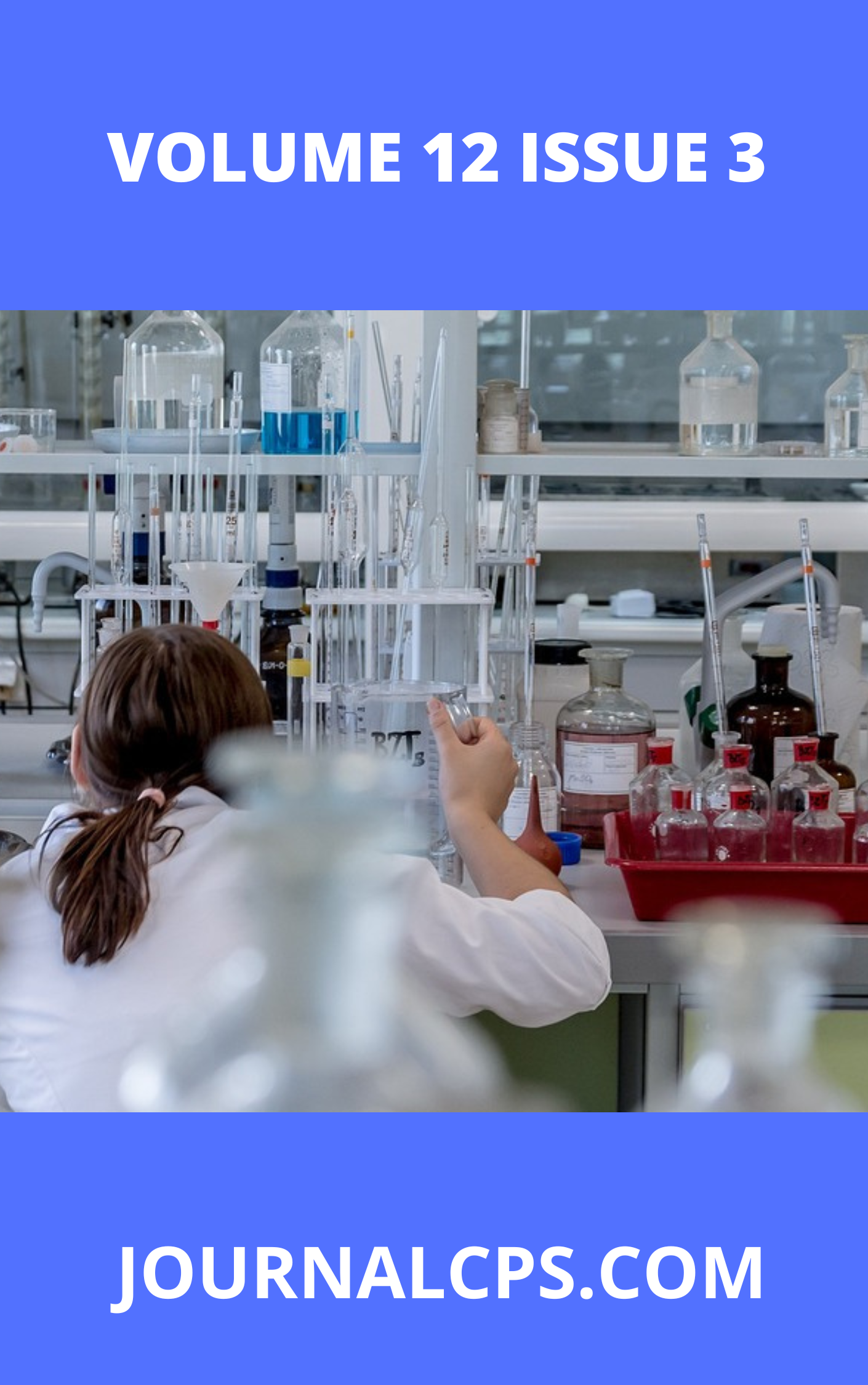In Silico Anti-Inflammatory Activities of Abelmoschus Esculentus Derived Ligands On Cox-2
Keywords:
Abelmoschus esculentus, COX-2, docking, ferulic acid, caffeic acid, vanillic acid, polyphenols, toxicity, drug-likeness, LD₅₀.Abstract
This study investigated the inhibitory potential of selected polyphenolic compounds identified in Abelmoschus esculentus (okra) against human Cyclooxygenase-II (COX-2), an enzyme implicated in inflammation, using molecular docking and in silico toxicity analysis. The compounds—ferulic acid, caffeic acid, and vanillic acid—were screened and docked using PyRx 0.8, with ibuprofen and Vioxx serving as reference inhibitors. The 3D crystal structure of COX-2 bound to Vioxx (PDB ID: 1PXX) was retrieved and prepared for docking. Ferulic acid demonstrated a binding energy of –5.1 kcal/mol, forming hydrogen bonds with ARG311, THR561, LYS2253, and LEU2246. Caffeic acid displayed a slightly better binding energy of –5.2 kcal/mol and interacted with ARG311, ASN570, and ASP2268. Vanillic acid, with a binding energy of –4.7 kcal/mol, formed bonds with ASN570, ILE558, ARG311, and LYS557. Comparatively, ibuprofen and Vioxx recorded binding energies of –5.5 kcal/mol and –6.0 kcal/mol, respectively, affirming their higher affinity to COX-2. RMSD values for all docked compounds were 0.00 Å, confirming good binding pose stability. In silico toxicity analysis using the ProTox-II platform revealed LD₅₀ values of 1772 mg/kg, 2980 mg/kg, and 2000 mg/kg for ferulic acid, caffeic acid, and vanillic acid, respectively. Ferulic acid and vanillic acid were classified as non-toxic (Class 4) and inactive for carcinogenicity, while caffeic acid, although classified as Class 5, showed predicted carcinogenic potential. Drug-likeness profiling using SwissADME confirmed that all test compounds satisfied Lipinski’s and Ghose’s rules, indicating favorable oral bioavailability. The findings suggest that ferulic and vanillic acids possess promising anti-inflammatory potential as natural COX-2 inhibitors with acceptable safety profiles. These compounds may serve as candidates for further development into plant-based therapeutics, subject to experimental validation and pharmacokinetic assessment
Downloads
Published
Issue
Section
Most read articles by the same author(s)
- Onuchi Marygem Mac-Kalunta, Chinedu Ifeanyi Nwankwo, Anslem Kenechukwu Nwokedi, Uzoefuna Chima Casmir, Acute Toxicity and Hypolipidemic Study of Extracts of Brillantaisia Owariensis and Andrographis Paniculata Leaf , Communication In Physical Sciences: Vol. 9 No. 4 (2023): VOLUME 9 ISSUE 4
Similar Articles
- Taye Temitope Alawode, Molecular Docking Studies on Eudesmane Sesquiterpenes as Potential Anti-leishmanial Agents , Communication In Physical Sciences: Vol. 11 No. 4 (2024): VOLUME 11 ISSUE 4
- Amaku James Friday, Victor Okezie Ikpeazu, Ifeanyi Otuokere, K. K. Igwe, Bioactive phenolic compounds isolated in morus alba leaves as potential inhibitor of Hepatitis C Virus NS3 Protease: A molecular docking approach , Communication In Physical Sciences: Vol. 5 No. 4 (2020): VOLUME 5 ISSUE 4
- Unwanaobong Friday Robert, Ifeanyi Edozie Otuokere, Jude Chodozie Nnaji, Synthesis, Characterization, and ADME/T Prediction of (2Z)-2-[2-(2,4-Dinitrophenyl)hydrazinylidene]-1,2-diphenyle -than-1-ol (DPHD) and Its Copper(II) Complex , Communication In Physical Sciences: Vol. 12 No. 7 (2025): Volume 12 issue 7
- Taye Temitope Alawode, Molecular Docking Studies on Eudesmane Sesquiterpenes as Potential Anti-leishmanial Agents , Communication In Physical Sciences: Vol. 12 No. 1 (2024): VOLUME 12 ISSUE 1
- Amaku James Friday, Victor Okezie Ikpeazu, Ifeanyi Otuokere, Kalu K. Igwe, Targeting Glycogen Synthase Kinase-3 (Gsk3β) With Naturally Occurring Phytochemicals (Quercetin and its Modelled Analogue): A Pharmacophore Modelling and Molecular Docking Approach , Communication In Physical Sciences: Vol. 5 No. 4 (2020): VOLUME 5 ISSUE 4
- G. U. Kaior, N. J. Nwodo, U. S. Oruma, A. Ibezim, A. E. Ochonogor, K. K. Onyia, Nnamdi L. Obasi, Structural, Antimicrobial and in Silico Studies of Some Schiff Bases of Trans-paramethoxycinnamaldehyde Derivatives , Communication In Physical Sciences: Vol. 5 No. 4 (2020): VOLUME 5 ISSUE 4
- Samuel A. Egu, Akachukwu Ibezim, Efeturi A. Onoabedje, Uchechukwu C. Okoro, N-Myristoyl Transferase Inhibitors with Antifungal Activity in Quinolinequinone Series: Synthesis, In-silico Evaluation and Biological Assay , Communication In Physical Sciences: Vol. 5 No. 4 (2020): VOLUME 5 ISSUE 4
- Ndidiamaka Justina Agbo, Pius Oziri Ukoha, Uchechukwu Susan Oruma, Tania Groutso, Oguejiofo Theophilus Ujam, Solomon Ejike Okereke, Crystal Structure, in Silico Studies and Anti-diabetic Potentials of 3-e-(1,5-dimethyl-3-oxo-2-phenyl-2,3-dihydro-1h-pyrazol-4-yl)hyd -razinylidene]pentane-2,4-dione(hdpp)and its Cu(II) and Ni(II) complexes , Communication In Physical Sciences: Vol. 11 No. 4 (2024): VOLUME 11 ISSUE 4
- Okoche Kelvin Amadi, Stella Mbanyeaku Ufearoh, Innocent Ajah Okoro, Paulina Adaeze Ibezim, Mitigation of the Corrosion of Mild Steel in Acidic Solutions Using An Aqueous Extract of Calopogonium muconoide (cm) as a green corrosion inhibitor , Communication In Physical Sciences: Vol. 8 No. 3 (2022): VOLUME 8 ISSUE 3
- Onuchi Marygem Mac-Kalunta, Chinedu Ifeanyi Nwankwo, Anslem Kenechukwu Nwokedi, Uzoefuna Chima Casmir, Acute Toxicity and Hypolipidemic Study of Extracts of Brillantaisia Owariensis and Andrographis Paniculata Leaf , Communication In Physical Sciences: Vol. 9 No. 4 (2023): VOLUME 9 ISSUE 4
You may also start an advanced similarity search for this article.




